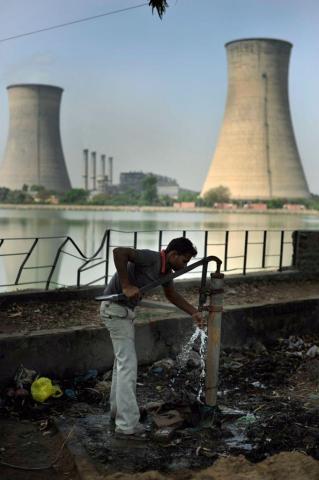Warrior Lawyer Profile: Mahesh Chandra Mehta

Clara Vekslund
Allard Exchange Student
May 14, 2025
The Green Avenger of India
Mahesh Chandra Mehta (better known as M.C. Mehta) is perhaps the most renowned environmental lawyer and activist in India. His tireless efforts and involvement in several historic cases earned him the Goldman Environmental Prize in 1996 and later the nickname ‘The Green Avenger of India’. By devoting his legal career to the protection of the environment, he almost single-handedly obtained about 40 landmark judgments and numerous orders from the Supreme Court of India against polluting factories – a record that may be unrivalled by any other environmental lawyer in the world.
From Awe to Activism: the moment that changed M. C. Mehta’s mission

Mehta’s journey to environmentalism was spurred by a personal encounter in 1984, when he visited the Taj Mahal for the first time, just about as thrilled and excited to lay eyes on one of the seven wonders of the world as you could imagine. To his great disappointment and frustration, however, he quickly noticed that the famous white marble of the mausoleum had turned yellow.
The culprit behind this yellow cancer: acid rain. As part of their daily operations, industrial facilities in the area were burning coal and coke, which released gases like sulphur dioxide (SO2) and nitrogen oxide (NOx) into the air. These gases formed sulphuric acid (H2SO4) and nitric acid (HNO3) when mixed with the naturally occurring water vapour in the air. Acid rain then fell on the Taj Mahal and eroded the marble.
This disturbing realisation became a turning point for Mehta and spurred him to file his first environmental case against the national government. The case eventually worked its way to the Supreme Court of India.
The case of M.C. Mehta v. Union of India (1996) was finally decided in 1996, approximately 10 years after its initial filing in 1985. As counsel for the plaintiffs, Mehta argued that the use of coal and coke by refineries and factories in the area was causing the deteriorating conditions of the Taj Mahal.
His petition relied on scientific evidence and reports conducted by the National Environmental Engineering Research Institute of India (NEERI) to support his claims, as its 1990 annual report concluded that "the rapid industrial development of the Agra-Mathura region has resulted in acidic emissions into the atmosphere at an alarming rate.”
To Mehta’s great relief, the Supreme Court sided with the plaintiffs and concluded that it was “proved beyond doubt that the emissions generated by the use of coke/coal by the industries in the TTZ [Taj Trapezium Zone] are the main polluters of the ambient air”. The Court ordered that the air pollution in the Taj Trapezium Zone be “eliminated at any cost” and mandated 292 polluting factories locally operating in that area, including thermal power plants, foundries, refineries and railway marshalling yards, to switch to less polluting fuels such as natural gas or relocate outside the area.
In October of 2001, the District Magistrate of Agra ordered the closure of 140 industrial units for not filing affidavits confirming that they would switch to cleaner fuels. A win for Mehta and the environment.
A year after his fateful visit to the Taj Mahal, Mehta learned that the Ganges, the holiest river in India, had caught fire for more than 30 hours due to industrial pollution. The fire, ignited by a matchstick tossed in the water by a smoker, was a result of the presence of a toxic layer of chemicals produced by a pharmaceutical firm near the river.
Again, the desperate state of the environment spurred Mehta to initiate another public interest case in order to hold the polluting factories accountable.

In the case M.C. Mehta vs Union Of India (1987), the Supreme Court of India ordered various measures for reducing the pollution of the river. These included closure of the polluting factories along the riverbanks, setting up sewage treatment plants, and putting in effective and stricter waste management measures, with monetary penalties for dumping waste in the river.
However, now, more than thirty years later, the Ganges is more polluted than ever. Even though more than 500 billion rupees (8,18 billion Canadian dollars) were spent over 14 years to build 83 sewage treatment plants, most weren’t large enough or sturdy enough to operate well. Nevertheless, Mehta’s efforts were the start of something bigger – a movement to protect not just the Ganges, but all of India’s natural resources for future generations.
Courtroom to Community: M.C. Mehta’s Mission Expands
Since the start of his legal career, Mehta has successfully litigated over 40 environmental cases at the Supreme Court of India. However, his impact goes far beyond his own legal battles. As part of his lifelong mission to protect India’s environment, he established the M.C. Mehta Environmental Foundation, an NGO dedicated to training future environmental lawyers and leading justice campaigns. The Foundation provides legal support, conducts research, and raises awareness about pressing environmental issues, ensuring that future generations of lawyers and activists carry forward his mission. Thus, his Foundation ensures that his legal activism doesn’t end with him – it empowers the next generation to continue the fight.
- Centre for Law and the Environment


